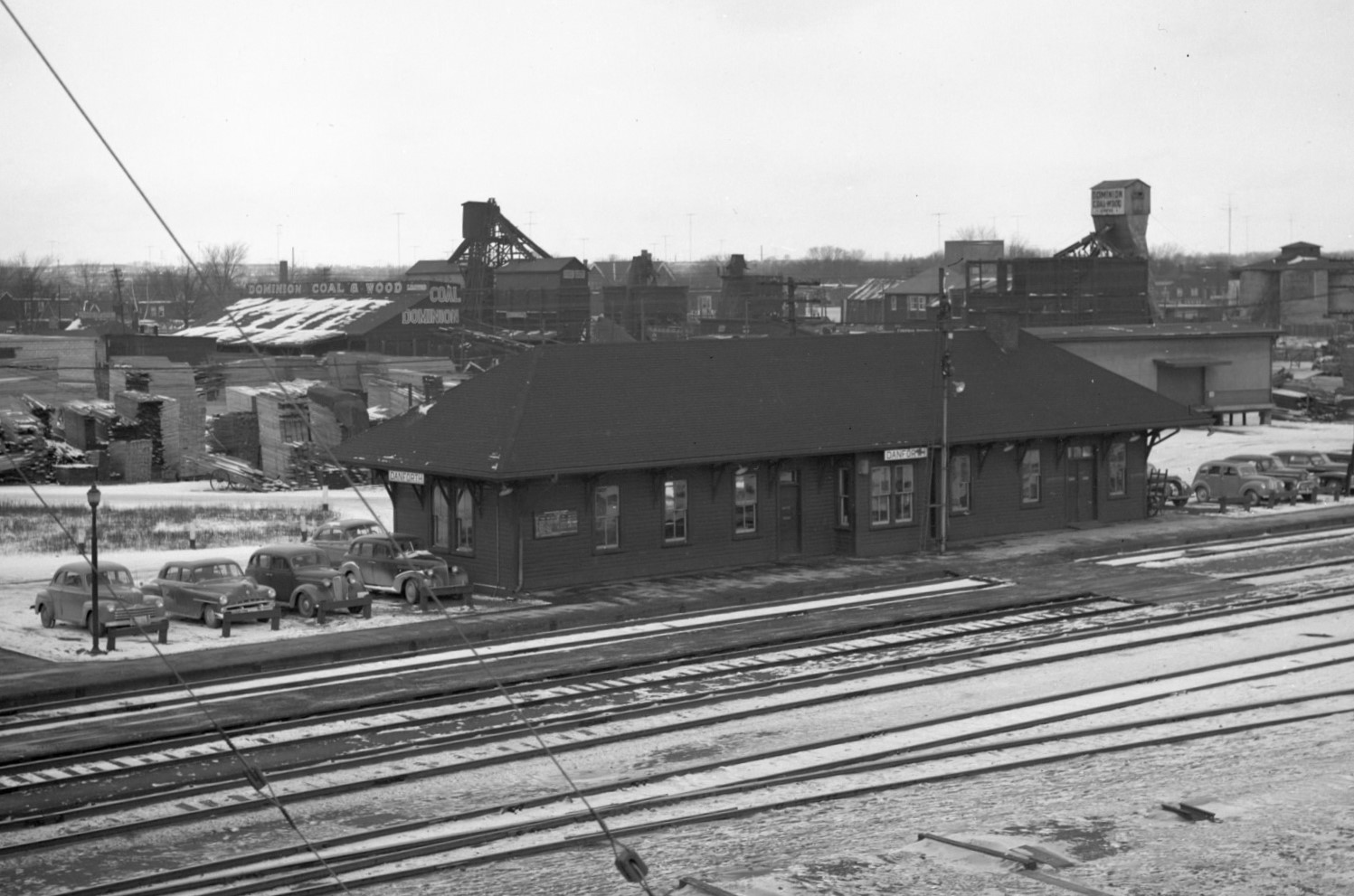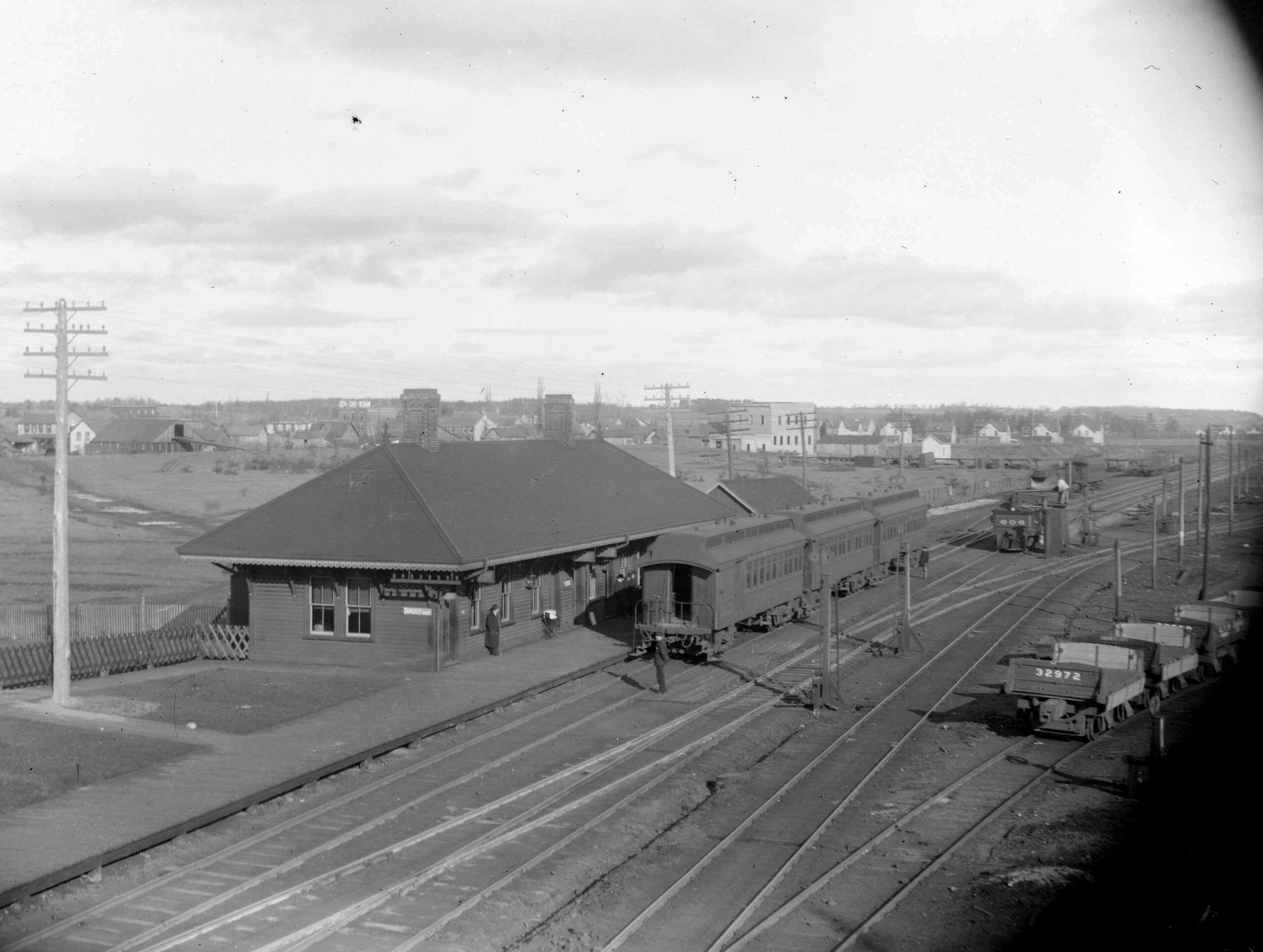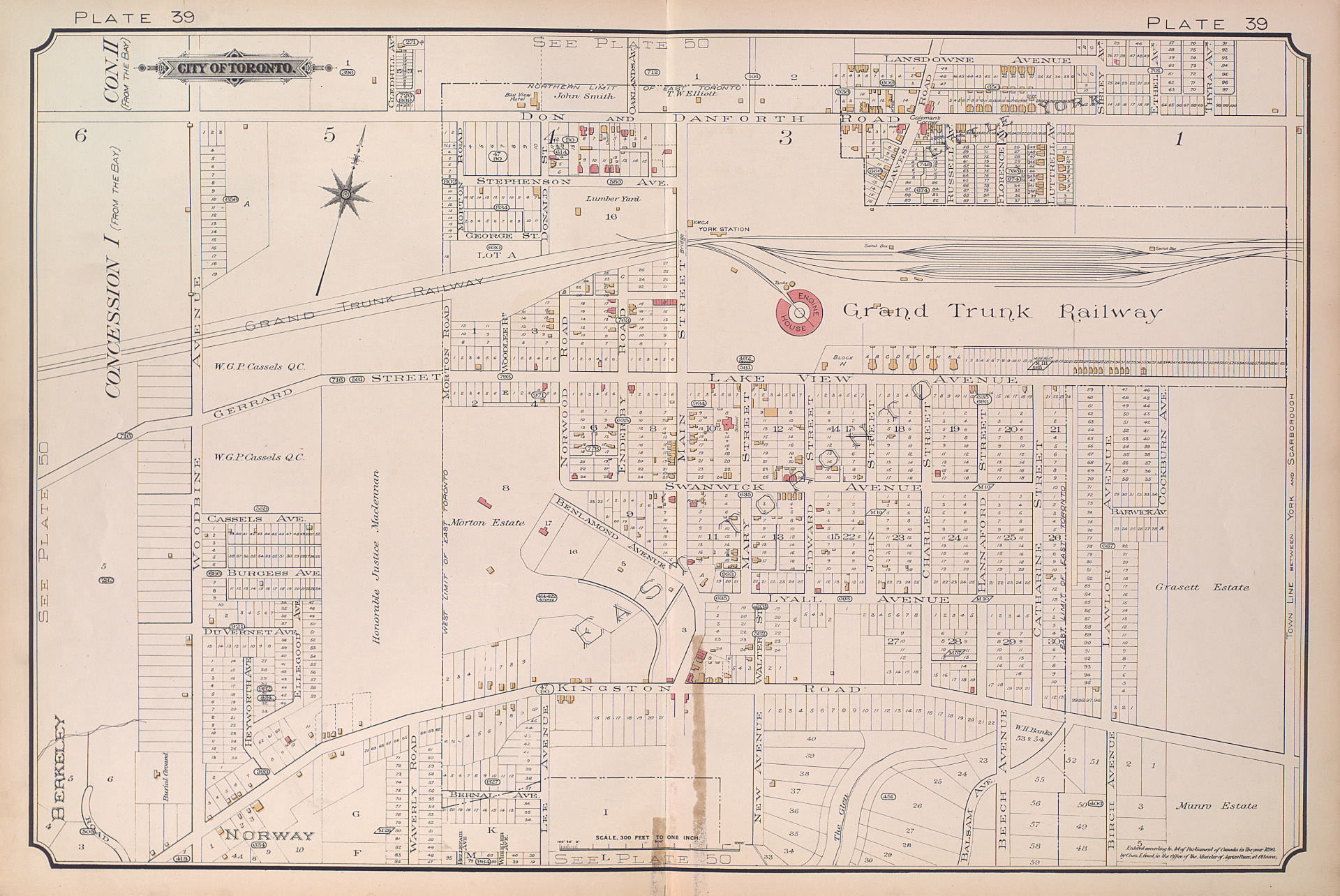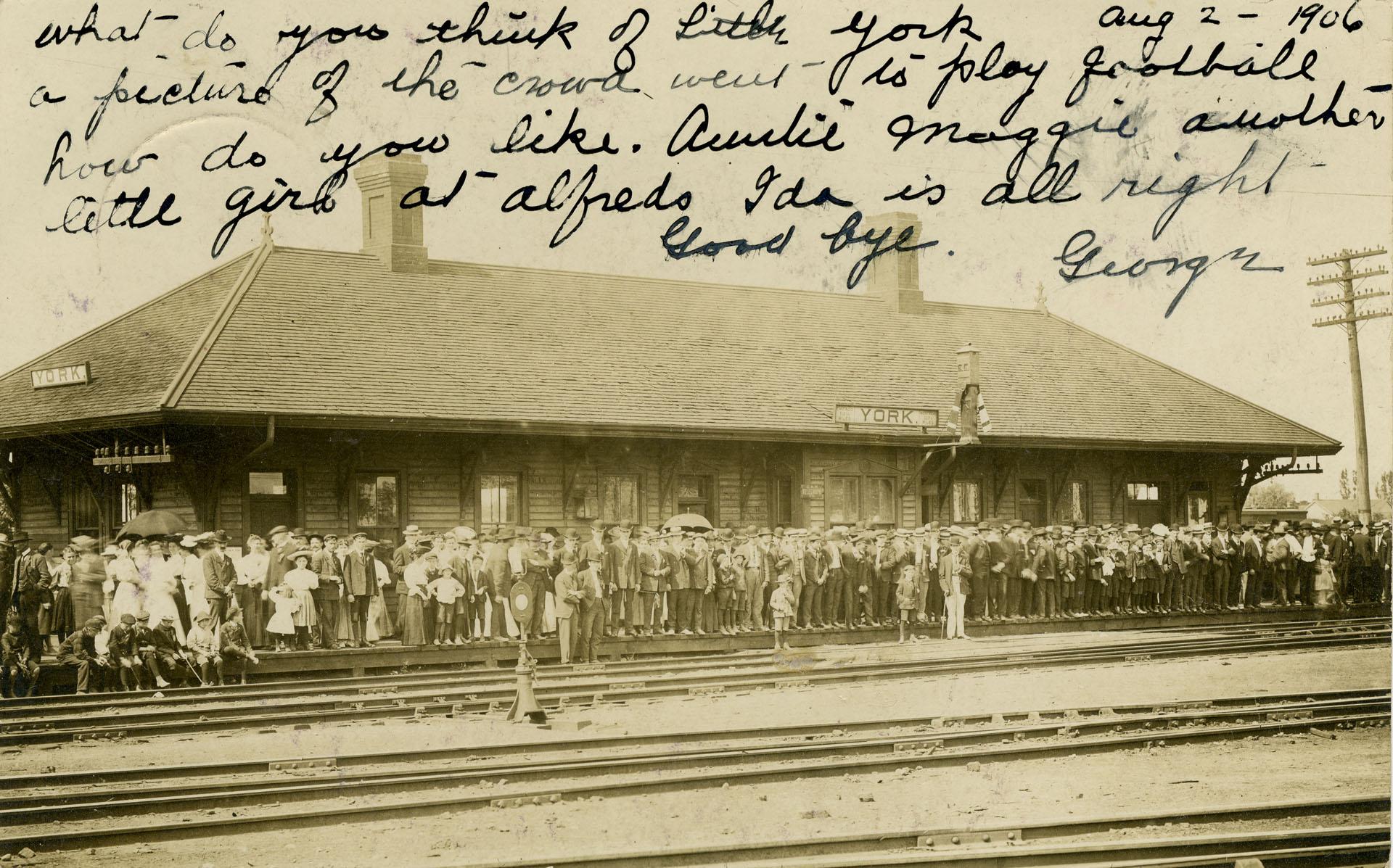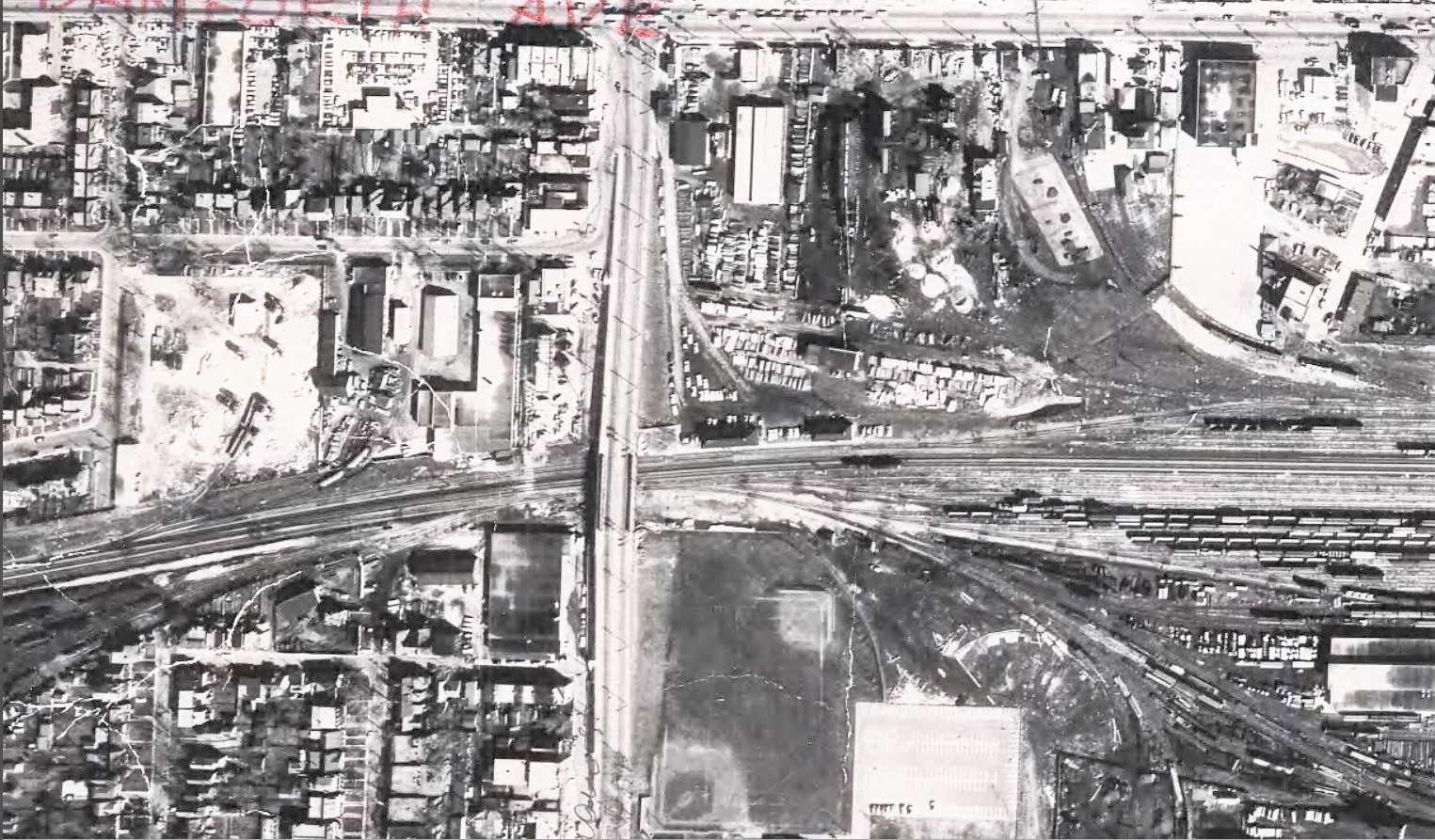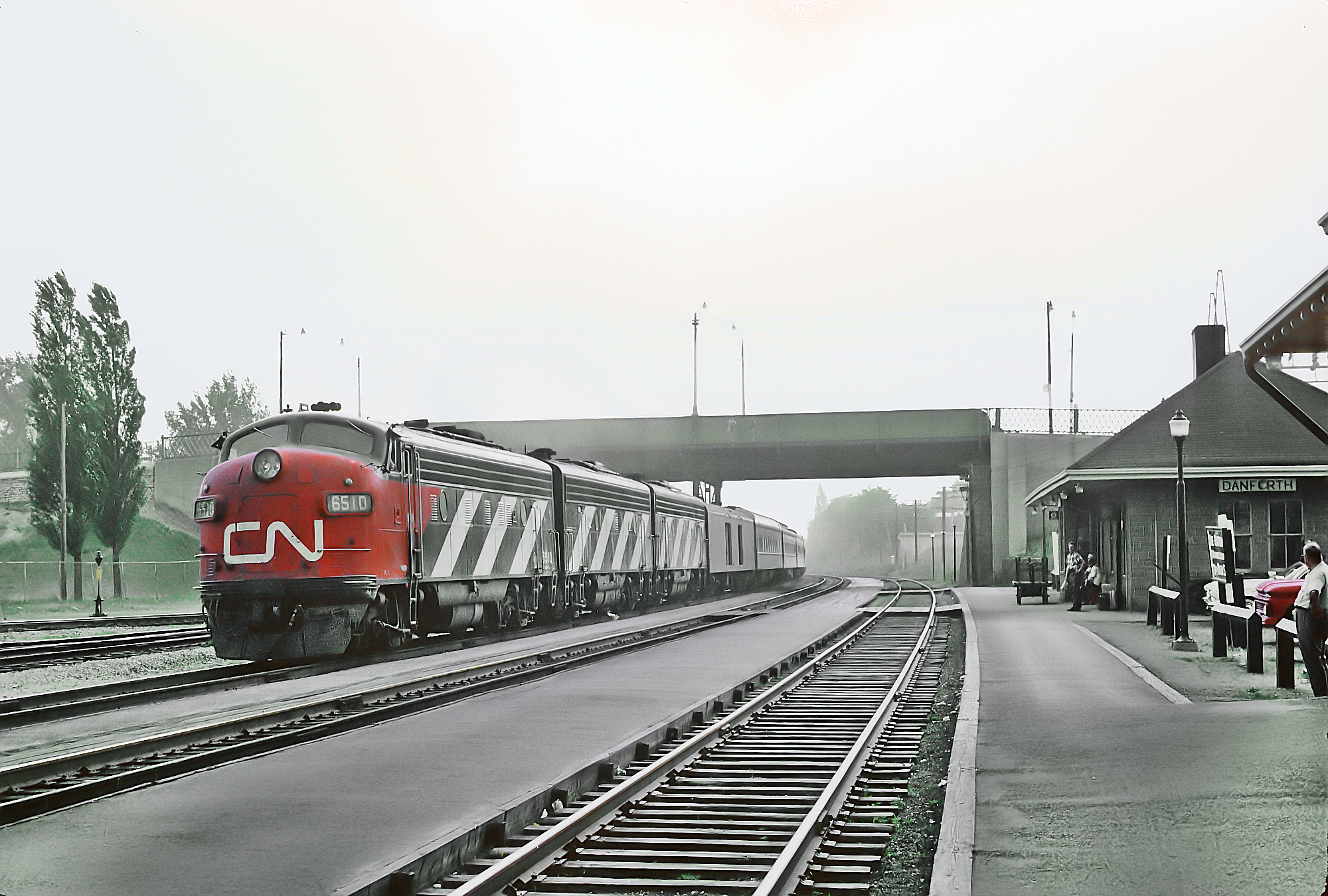Summary
At the time the Grand Trunk Railway was built through modern-day Danforth in 1856, there were only a handful of small settlements nearby. The closest was the hamlet of Coleman’s Corners at the intersection of Dawes Road and Danforth Avenue, consisting of only a post office and a couple of shops and inns. It’s likely that the sparse population density was not enough to justify the opening of a passenger station here, and it was left without one for the Grand Trunk’s first three decades of operation. The area became known as “Little York” as the local population grew, relating it to the nearby Town of York which is what Toronto was called until 1834.
The importance of Little York in respect to the railway industry would rapidly increase during the early 1880’s. In an effort to move railway operations away from downtown to reduce congestion, it was decided by Grand Trunk officials to establish a new freight yard and locomotive maintenance facility at Little York. The nearby community, whose population would soon see an influx of railway employees, would be given a passenger station for convenience. In 1881, the Grand Trunk Railway’s General Manager Joseph Hickson announced his company’s intentions to lay a second track along the entire length of the Toronto-Montreal line to increase throughput. With Little York now well positioned as a future suburban community of Toronto, it made sense to double track this segment as soon as possible for the introduction of commuter trains. On August 23rd, 1883, a contract was signed between the Grand Trunk and two different contractors to build an additional main track from the Don River to Scarborough Junction. Work commenced the following day involving a total of 40 workers who made use of steam shovels, engines, and plows. The second main track was opened to Little York on December 17th. The station, which was completed during the same year, was a sizeable wooden structure. It was rectangular in shape with a hipped roof, offering little else in the way of architectural embellishments. Its design was relatively unique, at least compared to other stations built within the Toronto area. A 420-car freight sorting yard was opened opposite the station in early January 1884, including a 31-stall roundhouse with a 70-foot turntable.
On May 2nd, 1887, the Grand Trunk commenced its commuter service between Little York, Union Station, and Weston. These “suburban” trains arrived or departed Little York Station up to twelve times per day by 1890, making frequent stops at numerous locations on the way to Weston. It was reported that this particular service became fairly lucrative despite most suburban trains operating at a loss during the same period. Now at a population of approximately 5,000, Little York was amalgamated into Toronto in 1908. In 1922, just before the financially-ailing Grand Trunk was nationalized and merged into Canadian National, the station was renamed Danforth. The Danforth Roundhouse was closed and boarded up during the 1930’s, possibly due in part to the 1927 opening of Canadian National’s Spadina Roundhouse as well as economic downturn from the Great Depression. After sitting abandoned for many years it was finally torn down during or immediately after World War Two. As automobiles gained popularity throughout the early to mid 20th century, passenger ridership began to decline across the continent. At the local level, this was especially the case after the opening of Highway 401 just north of Danforth between 1947 and 1956. This highway served many of the same communities as the railway, incentivizing commuters to drive instead of taking the train. GO Transit commenced operations between Pickering and Oakville on May 23rd, 1967 to supplant the waning commuter service offered by Canadian National, and the original Danforth Station was adapted for this new service. GO continued to use the 1883 building until 1974 when it was finally demolished and a new one was built in its place.
Condensed Station Info:
| Location: | Served By: | Current State: | Date Built: | Date Demolished: |
| East side of Main Street | Grand Trunk (1883 – 1923) Canadian National (1923 – 1967) GO Transit (1967 – 1974) | Demolished | 1883 | 1974 |


